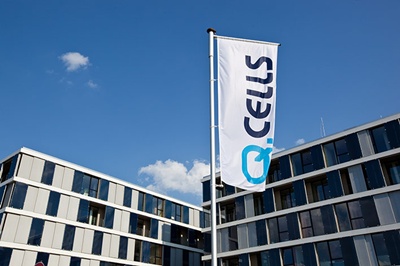12 Nov 2010
Major supplier of solar cells and modules is looking for a more balanced geographical split in 2011, as the German PV market absorbs feed-in tariff cuts.

Leading solar cell and module supplier Q-Cells reported a strong increase in sales for the third quarter of 2010, as customers in the key German market rushed to install photovoltaic systems ahead of a significant cut to the country’s feed-in tariff.
At €401.6 million, its sales were more than double the figure posted last year, and also up 20 percent sequentially on strong demand in the company’s domestic market. “In the third quarter, it was a very hot market,” said CEO Nedim Cen, although he added that demand had returned to more sensible levels for the final quarter of the year.
Q-Cells believes that a remarkable 3.6 GW (peak) of photovoltaic power was installed in Germany in the third quarter of the year alone, illustrating the rush to beat the feed-in tariff cut. For the first nine months of 2010, the company estimates that German installations reached 5.4 GW, while the Bonn-based Bundesnetzagentur – the federal network agency with responsibility for German energy markets – estimates that the figure was over 5.25 GW.
Whatever the exact figure is, it represents a huge increase on the level of installations seen in 2009, when Germany represented around half of the global market of 7.3 GW. “In June 2010 alone, more than 2 GW have been installed,” noted Matthias Kurth, the Bundesnetzagentur president. “This exceeds the level of the previous five months.”
In late October, the Bundesnetzagentur published the long-awaited 2011 tariffs for the German market, which represent a 13 percent cut on 2010 levels – a less severe reduction than many had expected.
Cost reductions
Nevertheless, the impact of the cut on demand growth in Germany is still expected to be significant, and Q-Cells highlighted the need to both respond to those cuts with its own cost reductions, and for the solar industry to become more geographically diverse.
Part of the reason why Q-Cells wants to see a more globalized market is that it has recently expanded production at its manufacturing facility in Malaysia. The company now has an annual production capacity of 1.1 GW, with slightly more than half of that production coming from Malaysia.
Despite uncertainty about exactly how Germany will react to the tariff cut in 2011, Q-Cells CEO Cen remains confident of a strengthening market next year – predicting double-digit growth of new PV installations globally. Crucial to that global growth will be the performance of the North American PV market - Q-Cells is expecting this region to contribute more than 2 GW of installations next year, with a number of very large utility-scale projects currently being built in both Canada and the US.
As well as being one of the world’s largest suppliers of silicon-based solar cells and modules, Q-Cells also owns the thin-film PV specialist Solibro, whose products are based on the copper indium gallium diselenide (CIGS) semiconductor. While the CIGS sector is a crowded space, Solibro was identified by market analyst Lux Research as a likely dominant player in the sub-sector following an expected industry shake-out in the coming months.
Solibro’s production capacity has also been ramped up in recent months, and the company will be able to produce 135 MW in 2011. That production ramp has generally been viewed as successful, with a conversion efficiency of 16.7 percent shown by its best thin-film modules, compared with 13 percent for its regular products.
However, Solibro’s sales did not match that production advance in the latest quarter, with Cen admitting that the company had under-estimated some crucial differences between the silicon and CIGS solar markets in its sales efforts.
| © 2025 SPIE Europe |
|